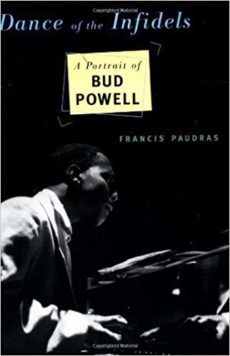
Daily Dose Of Jazz…
Francis Paudras was born on January 21, 1935 in Chilly-Mazarin, France. While in his early 20’s then an amateur pianist, Francis became a keen follower of jazz in Paris and in the early 1960s he befriended the ailing, alcoholic Bud Powell, one of the premier musicians of be-bop, who had gone to France with his wife, Altevia Edwards, and her son, Johnny. In 1963, with the help of the musician Johnny Griffin, he checked Powell into a hospital, but by then a custody battle emerged between him and his wife.
Powell was diagnosed with tuberculosis, and for the next year, Francis was his caretaker. When Powell was booked for a six-week engagement at Birdland in Manhattan, in December 1964, Mr. Paudras was his advance man, creating a wave of publicity. The run opened to stunning reviews but quickly worsened as Powell slid back into drinking. At the end of the engagement, Powell decided to remain in New York, where he died in 1966.
Paudras later became a friend and supporter of other musicians, including Bill Evans and Jacky Terrasson. Though his devotion to Powell eventually turned into a personal disappointment, he memorialized his friendship in his 1986 book, La Danse des Infideles that was ultimately adapted for the film Round Midnight that same year. He also co-author, with Chan Parker, of ‘To Bird With Love, a book of photographs published in 1981. He also issued recordings of Powell and others through the years, including some he made privately in the early Sixties.
Commercial artist, author, collector of jazz-related artifacts and patron of jazz musicians Francis Paudras passed away by committing suicide at his castle on November 26, 1997 in Antigny, France. He was 62.
More Posts: artist,author,collector,history,instrumental,jazz,music,patron
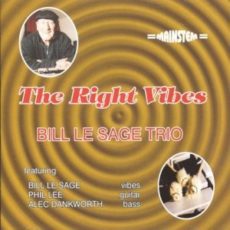
Daily Dose Of Jazz…
Bill Le Sage was born William A. Le Sage in London, England on January 20, 1927. His father and two uncles were musicians and he started playing the ukulele at the age of eight, drums at fifteen and taught himself to play the piano.
His career began in 1945 when he led his first sextet. He was then a member of army bands while serving with the Royal Signals. He played piano for the Johnny Dankworth Seven in 1950 but decided to switch to the vibraphone. Leaving in 1954 Bill joined the various small groups led by the drummer Tony Kinsey, until 1961 when he started playing with baritone saxophonist Ronnie Ross, with whom he co-led various line-ups until 1966. During this period, he also played with Kenny Baker’s Dozen and wrote music for television and films.
The 1960s gave Le Sage the opportunity to work with the Jack Parnell Orchestra, the Chris Barber Band, and led his group, Directions In Jazz. His composer credits included scores for the films The Tell-Tale Heart, Tarnished Heroes, The Silent Invasion, Strip Tease Murder and The Court Martial of Major Keller.
He accompanied numerous visiting American musicians, including guitarist Tal Farlow on an annual basis. In 1969, he formed the Bebop Preservation Society Quintet, which he continued for more than two decades and also worked with Barbara Thompson’s Jubiaba and others. Vibraphonist Bill Le Sage passed away in London on October 31, 2001.
More Posts: bandleader,composer,history,instrumental,jazz,music,piano,vibraphone
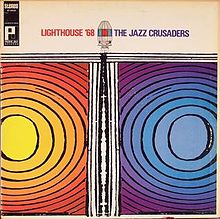
Requisites
Lighthouse ’68 is a live album by The Jazz Crusaders recorded on November 10-13, 1967 at the Lighthouse in Hermosa Beach, California and released the following year on the Pacific Jazz label. Lighthouse ’68 documents the group performing live at one of the premier West Coast clubs, The Lighthouse Café, opened in 1949.
The producer on the date was Richard Bock. The cover design was created by Gabor Halmos, the engineer was Dino Lappas, the liner notes were written by Howard Rumsey, and the liner photography was taken by Fred Seligo.
The Tracks | 44:33- Ooga-Boo-Ga-Loo (Stix Hooper) – 6:39
- Eleanor Rigby (John Lennon, Paul McCartney) – 7:32
- Native Dancer (Buster Williams) – 8:52
- Never Had It So Good (Joe Sample) – 7:15
- The Emperor (Buster Williams) – 8:50
- Impressions (John Coltrane) – 6:12
- Wayne Henderson – trombone
- Wilton Felder – tenor saxophone
- Joe Sample – piano
- Buster Williams – bass
- Stix Hooper – drums
Review by Eddie Carter
Four friends from Houston, Texas who began performing locally in 1956 were Wayne Henderson, Wilton Felder, Joe Sample, and Stix Hooper. They were originally known as The Swingsters, then The Nite Hawks, but after moving to Los Angeles, California in 1961, they changed their name and became one of the best West Coast ensembles of the sixties, The Jazz Crusaders.
The set opens with Oogo-Boo-Ga-Loo, an infectiously danceable audience grabber by Stix Hooper which begins with a lovely introduction by the trio, then blossoms into a sanctified styled theme treatment. John Lennon and Paul McCartney’s Eleanor Rigby allows their midtempo rendition to explore the melody collectively. The tempo moves up for Native Dancer, the first of two contributions by Buster Williams which gets off to a roaring start with an aggressive opening statement and nimble melodic presentation.
Sample’s Never Had It So Good starts the second side with an easy spirited beat that leads us back to church with a bit of boogaloo in the imaginative display of harmony during the group’s opening melody. The Emperor, is Williams’ second offering to the session that takes us back to straightforward bop with the solos in the same order as the previous tune.
The album ends with John Coltrane’s Impressions, takes an invigorating introduction by the trio and theme statement led by the horns followed with a jet-propelled interpretation infused with searing fire for an energetic workout and effervescent ending.
Source: Jazztracks by Eddie Carter | Excerpt: 12/2018 | atlantaaudioclub.org
More Posts: choice,classic,collectible,collector,history,instrumental,jazz,music
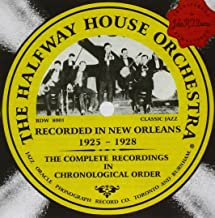
Daily Dose Of Jazz…
Abbie Brunies was born Albert Brunies on January 19, 1900 into a famous New Orleans, Louisiana family, which counted among its members George Brunies and Merritt Brunies.
Brunies was the leader of the Halfway House Orchestra from 1919 to about 1927, playing at the Halfway House club in New Orleans. This ensemble recorded for Okeh Records in 1925. Among the musicians who played in this group were New Orleans Rhythm Kings members Charlie Cordella, Mickey Marcour, Leon Rappolo, Sidney Arodin, Bill Eastwood, Joe Loyacano and Leo Adde.
>He played in New Orleans into the mid-1940s, after which time he moved to Biloxi, Mississippi. There he played with Merritt in the Brunie Brothers Dixieland Jazz Band. This ensemble recorded sparsely. Cornetist Abbie Brunies passed away in Biloxi on October 2, 1978.
More Posts: bandleader,cornet,history,instrumental,jazz,music
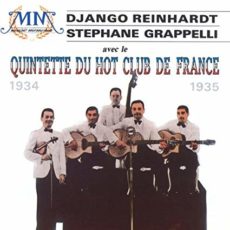
Daily Dose Of Jazz…
Charles Delaunay was born on January 18, 1911 in Vineuil-Saint-Firmin, Oise, the son of painters Robert Delaunay and Sonia Delaunay. As one of the founders of the Hot Club de France, together with Hugues Panassié, he initiated the Quintette du Hot Club de France with Django Reinhardt and Stephane Grappelli. He also organized concerts, for example with Benny Carter.
In 1935, again with Panassié, he founded Le Jazz Hot, one of the oldest jazz magazines. In 1937, he started Disques Swing, “Swing Records”, the first record label dedicated exclusively to jazz. During World War II Delaunay was a member of the Resistance while continuing to lead the Hot Club. 1948 was when he founded the record label Disques Vogue.
He authored the famous Hot Discography with five editions in England, France and the U.S., the first jazz discography and was also an artist. Author, jazz expert, co-founder and long-term leader of the Hot Club de France, Charles Delaunay passed away in Paris of Parkinson’s disease on February 16, 1988.
More Posts: artist,author,bandleader,history,instrumental,jazz,music,publisher



